
Fundamentals
The Halawa Hair Conceptual Meaning invites us to consider textured hair not merely as a biological structure, but as a living archive, a repository of generational wisdom, and a vibrant canvas for personal and communal identity. This profound understanding of hair, particularly within Black and mixed-race communities, begins with its elemental biology, a source from which all care rituals and cultural expressions arise. Hair, in its most basic form, is a protein filament, primarily composed of keratin. Yet, the spiraling architecture of textured strands, from loose curls to tightly coiled configurations, presents a unique set of characteristics that distinguish it from straighter hair types.
At its physical foundation, textured hair exhibits distinct properties. Its helical shape means that each strand possesses numerous points of curvature, places where the cuticle layer, the hair’s protective outer sheath, naturally lifts. This inherent design, a testament to genetic artistry, contributes to its remarkable volume and versatility. However, these same characteristics can also make it more susceptible to moisture loss and tangling.
Water, a fundamental element of vitality, finds it more challenging to travel uniformly down the length of a coiled strand compared to a straight one. This structural distinction provides the foundational understanding for many ancestral practices designed to hydrate and protect, ensuring hair’s vibrancy and resilience.
Halawa Hair Conceptual Meaning begins by recognizing hair as a dynamic entity, deeply connected to its biological design and the nurturing it receives.
Understanding the Halawa Hair Conceptual Meaning commences with recognizing the intrinsic qualities of each strand. For instance, the elasticity of textured hair—its ability to stretch and return—is a testament to its internal protein bonds. When these bonds are maintained through gentle manipulation and the application of nourishing emollients, hair retains its strength and supple quality.
Conversely, when subjected to harsh chemicals or excessive heat, these bonds can weaken, leading to breakage. This delicate balance, between its natural inclination and the impact of external interactions, shapes our comprehension of its fundamental needs.
The historical context of hair care, even at this foundational stage, points toward deeply ingrained ancestral wisdom. Long before modern science elucidated the protein structure of hair, traditional communities observed its behavior, its responses to environmental conditions, and its innate desire for hydration and protection. These observations led to the development of early care rituals, emphasizing the use of natural oils, butters, and plant extracts to coat the strands, seal in moisture, and provide a protective barrier. Such practices were not simply about aesthetics; they were about preserving the life force of the hair, ensuring its continued health and vitality.
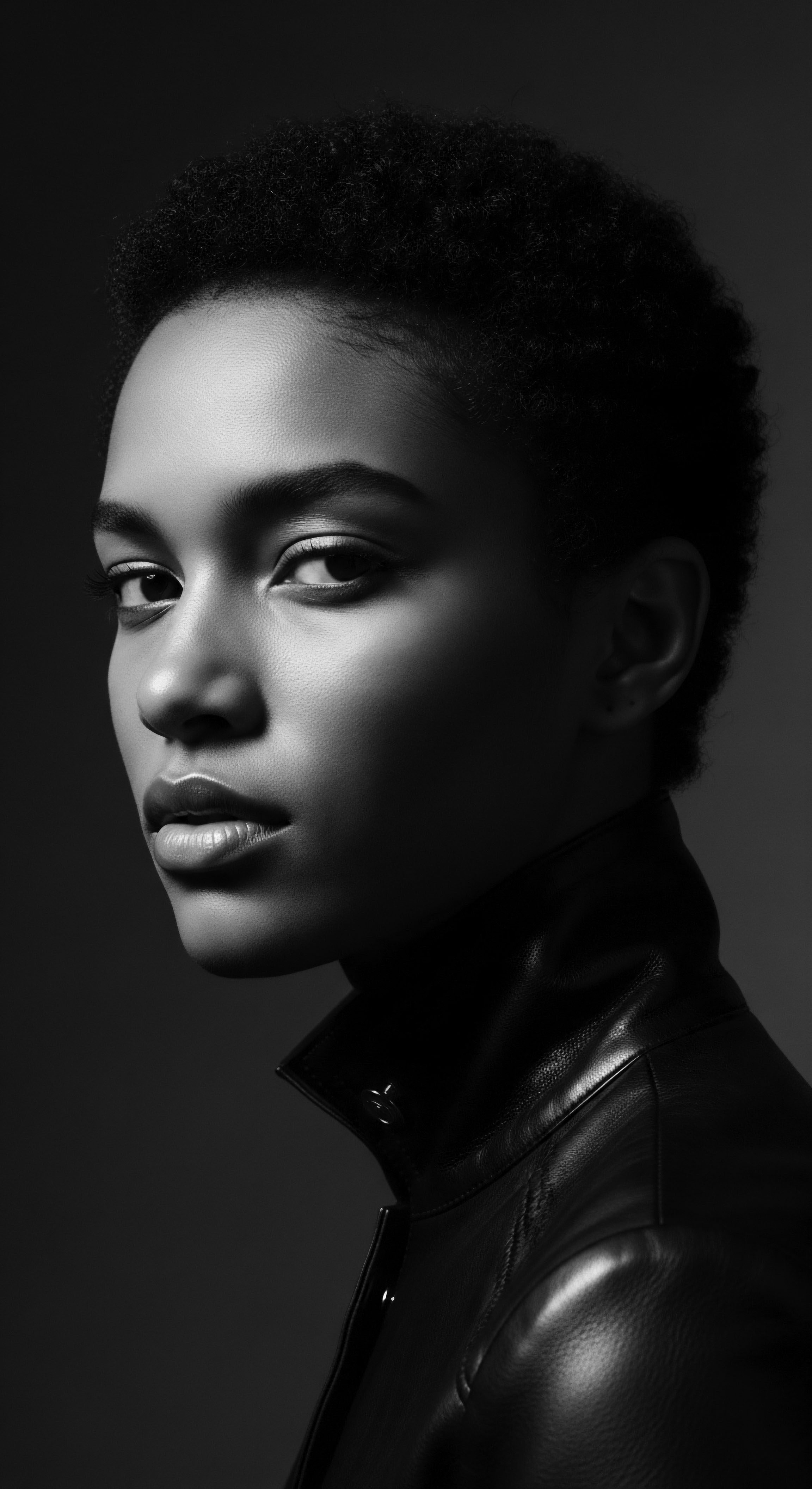
The Language of Hair ❉ Elemental Biology
A proper comprehension of Halawa Hair Conceptual Meaning requires an acknowledgment of hair’s biological specificity. The cortex, the central part of the hair strand, contains melanin, which determines its color, and keratin, which provides its strength. The cuticle, composed of overlapping scales, guards this inner core.
In textured hair, these scales do not lie as flatly as on straight strands dueating to the unique curl patterns, which often means that moisture evaporates more readily. This explanation clarifies why hydration has always been a primary concern for those caring for textured hair, a concern echoed across generations.
Density, another biological aspect, refers to the number of hair strands on the head. This varies significantly among individuals and ethnic groups, contributing to the overall appearance of fullness or volume. Low density, for example, might mean a focus on techniques that create an illusion of greater body, while high density often necessitates strategies to manage volume and prevent tangling. Observing these individual differences, ancestral communities tailored their approaches, demonstrating an intuitive grasp of hair’s varied needs.
- Porosity ❉ The ability of hair to absorb and retain moisture. High porosity means scales are open, absorbing quickly but losing water just as fast. Low porosity means scales are tightly closed, resisting water initially but retaining it well once hydrated.
- Elasticity ❉ The measure of hair’s stretch before breaking. Healthy hair possesses good elasticity, allowing it to be styled without excessive damage.
- Diameter ❉ The thickness of individual hair strands, categorized as fine, medium, or coarse. This impacts how hair feels and how it responds to products.
The earliest forms of care, born from a deep connection to the natural world, recognized these inherent characteristics. Preparations derived from local flora, perhaps infused with the warmth of the sun or the wisdom of lunar cycles, aimed to address these fundamental aspects. The consistent application of these concoctions, passed down through oral tradition, represents an early, intuitive science, a heritage of empirical observation translated into effective hair care. These practices laid the foundation for what Halawa Hair Conceptual Meaning encompasses ❉ a holistic understanding of hair’s physical and energetic needs.
| Property Curl Pattern |
| Description The shape of hair strands, from waves to tight coils. |
| Ancestral Care Reflection Varied braiding, twisting, or coiling techniques to manage and enhance natural shape. |
| Property Moisture Retention |
| Description Hair's capacity to hold water within its structure. |
| Ancestral Care Reflection Regular application of plant-based oils and butters as sealants. |
| Property Cuticle Health |
| Description The integrity of the outer protective layer. |
| Ancestral Care Reflection Gentle manipulation, natural cleansing agents, and protective styling. |
| Property Understanding these inherent properties guided communities in developing methods to maintain hair health and express its unique identity. |
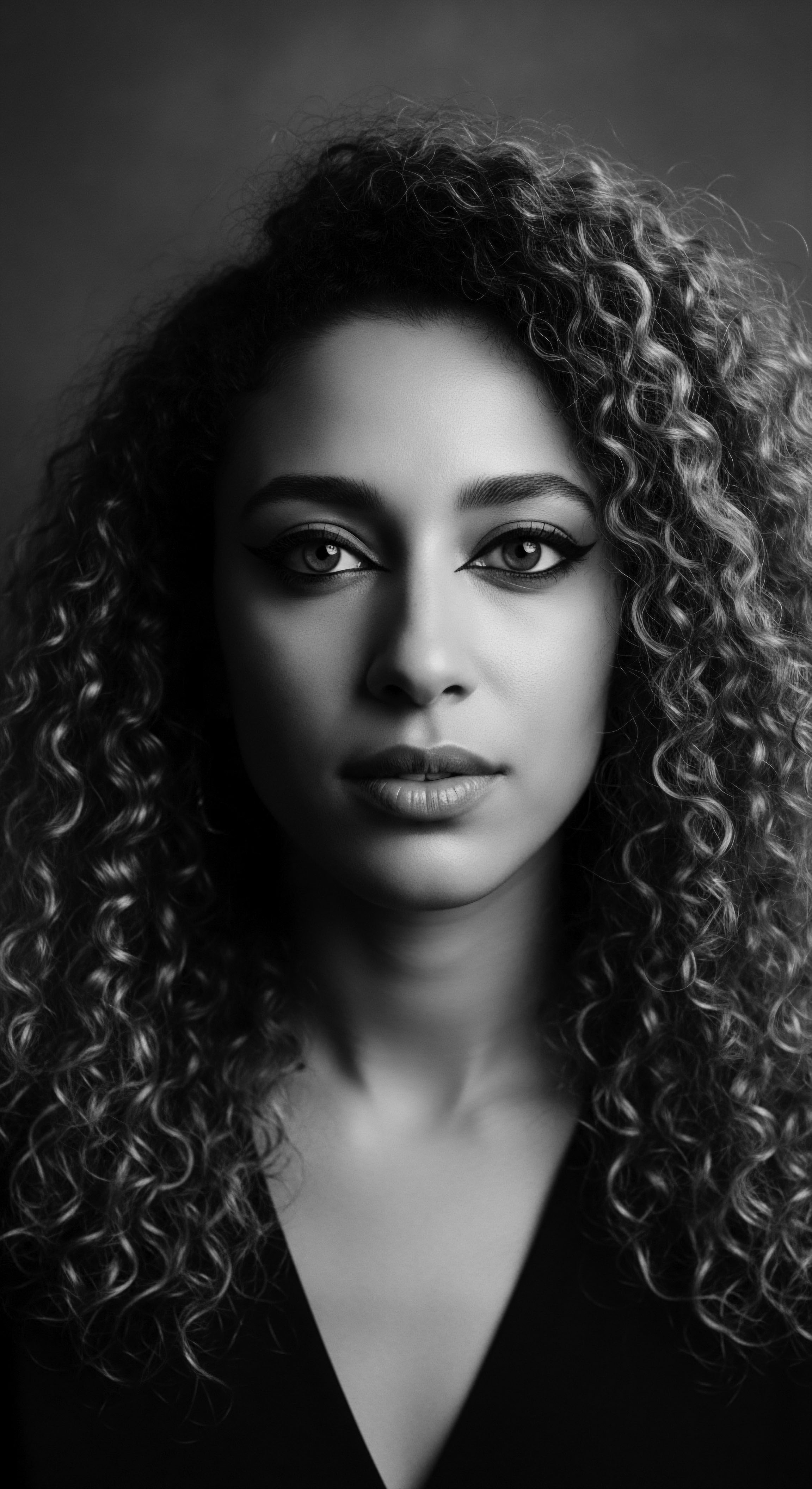
Intermediate
Moving beyond the purely physical, the Halawa Hair Conceptual Meaning progresses to acknowledge the complex interplay between hair’s intrinsic properties and the cultural narratives woven around it. This intermediate understanding begins to unfold the deeper significance of textured hair, recognizing it as a living testimony to heritage, identity, and collective experience. From the earliest communal gatherings for grooming to the enduring expressions of self in contemporary times, hair has always possessed a voice, communicating stories without uttering a single sound.
The concept of “Echoes from the Source” finds its resonance here, reminding us that every strand carries the memory of ancestral lands and practices. Before the transatlantic crossings, hair styling in many African societies was an elaborate and communicative art form. Hairstyles were not mere adornments; they were symbolic languages conveying age, marital status, social rank, ethnic identity, and even spiritual beliefs.
The very act of preparing hair was a deeply communal ritual, a time for sharing stories, transmitting wisdom, and solidifying social bonds. This collective engagement in hair care established a tradition of shared knowledge that would persist through hardship and displacement.
Textured hair, beyond its structure, carries the echoes of ancestral narratives, speaking volumes about identity and shared human journeys.
Consider the spiritual connection ascribed to hair in many pre-colonial African belief systems. The head, often seen as the highest point of the body, served as a conduit for divine energy and spiritual connection. Hair, as the crowning glory of the head, therefore held immense sacred value. Specific braids or coiffures could signify prayers, offer protection, or indicate a person’s alignment with particular deities.
This profound reverence meant that hair care was never a trivial pursuit; rather, it was a spiritual act, a means of honoring one’s inner self and one’s connection to the unseen world. Source.
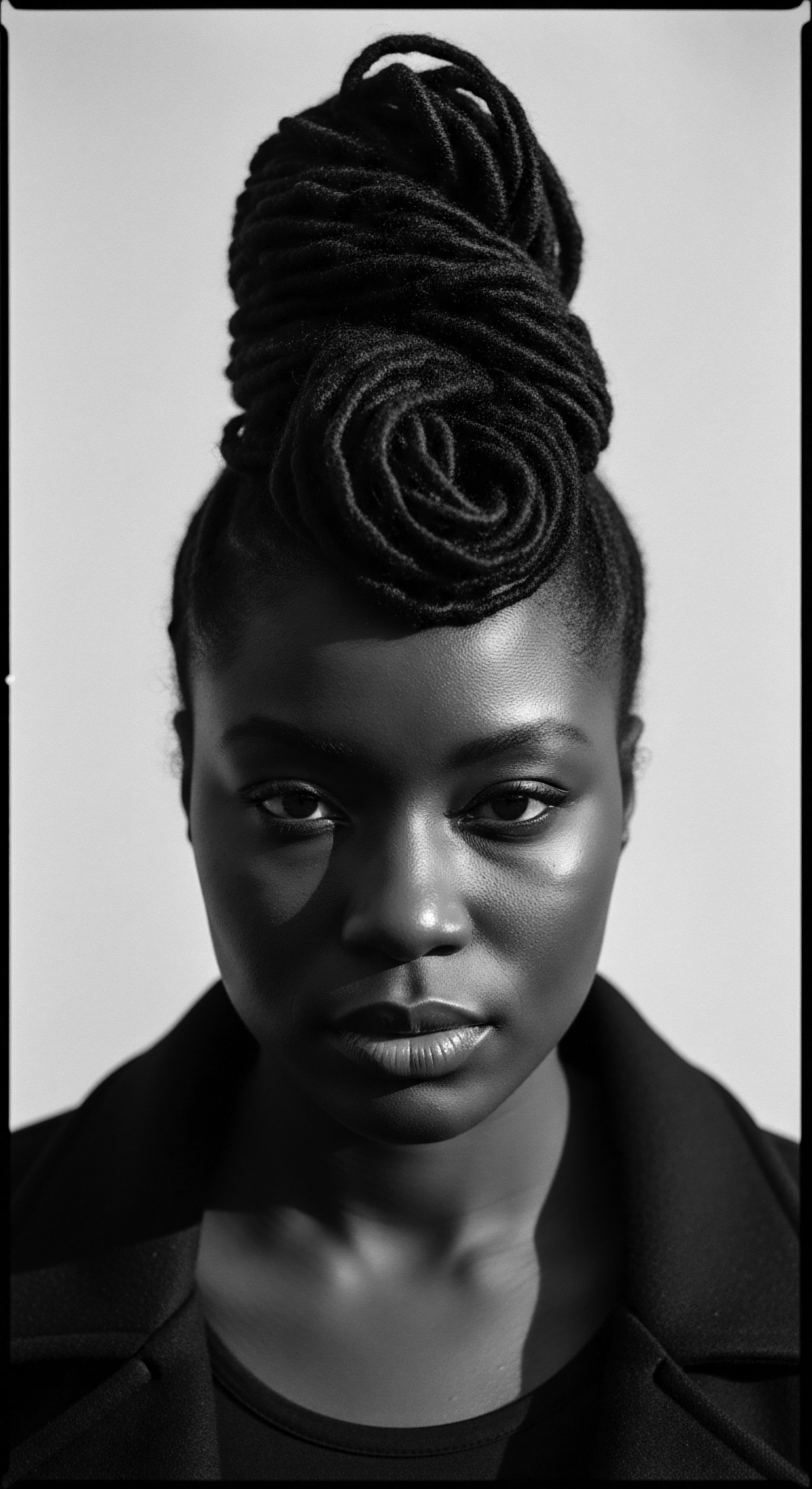
The Sacred Canopy ❉ Hair as Cultural Map
The Halawa Hair Conceptual Meaning, at this stage, prompts us to examine hair as a living map of cultural heritage. Each twist, each coil, every meticulously crafted braid held a place within a societal framework. For instance, among the Yoruba people of West Africa, hair was regarded as an extension of “ori,” the spiritual head and seat of one’s destiny.
The condition and styling of the hair were thought to influence one’s spiritual alignment and overall well-being. This deep philosophical perspective transformed hair care into a ritual of self-alignment and cosmic connection.
The colonial period brought unprecedented challenges to this established understanding. Forced removal of African identity through the shaving of heads upon arrival in the Americas, and the subsequent imposition of Eurocentric beauty standards, aimed to dismantle these deep-seated cultural connections. Yet, the spirit of Halawa Hair Conceptual Meaning reveals itself in the ingenious ways enslaved Africans adapted, resisted, and preserved their hair traditions. Coverings like headwraps, while sometimes mandated, also became expressions of resilience, hidden codes of communication, and reminders of a shared heritage.
- Protective Styling ❉ Techniques like braiding, twisting, and cornrowing, prevalent across African cultures, shielded hair from environmental damage and reduced manipulation.
- Communal Grooming ❉ Hair care was a collective activity, fostering intergenerational bonds and the transmission of cultural knowledge and stories.
- Natural Ingredient Lore ❉ The knowledge of indigenous herbs, oils, and clays for cleansing, conditioning, and styling hair was passed down orally.
This period of adaptation saw the invention of new tools and methods, born out of necessity and resourcefulness, to manage hair in unfamiliar conditions. The evolution of ingredients, from traditional plant extracts to improvised concoctions, speaks to the enduring human drive to care for one’s self and maintain cultural ties. These practices, though altered by circumstance, continued to affirm the deeper meaning of hair as a link to identity and a symbol of persistence against adversity.
| Historical Period Pre-Colonial Africa |
| Key Cultural Meaning of Hair Symbol of status, spirituality, identity, and group affiliation. |
| Hair Care Practice Reflection Intricate styling, communal grooming rituals, use of indigenous botanicals. |
| Historical Period Transatlantic Slavery |
| Key Cultural Meaning of Hair Symbol of dehumanization and resistance. |
| Hair Care Practice Reflection Forced shaving, clandestine styling, use of headwraps as defiance. |
| Historical Period Post-Emancipation Era |
| Key Cultural Meaning of Hair Striving for acceptance, expression of dual identity. |
| Hair Care Practice Reflection Emergence of straightening methods (hot combs, relaxers) alongside traditional styles. |
| Historical Period Hair's story mirrors the historical journeys of Black and mixed-race peoples, continually transforming yet retaining its profound cultural connection. |

Academic
The Halawa Hair Conceptual Meaning, when examined through an academic lens, presents itself as a sophisticated framework encompassing the biological agency of textured hair, its deep ancestral semiotics, and its dynamic role in articulating identity across Black and mixed-race experiences. This interpretation moves beyond surface-level observations to consider hair as a complex system, a living text upon which cultural, social, and psychological narratives are inscribed and continually re-inscribed. It is a concept that demands an interdisciplinary exploration, drawing from anthropology, sociology, and even psychodermatology, to truly comprehend its profound ramifications.
At its zenith, the Halawa Hair Conceptual Meaning signifies the inherent biological resilience and morphological variability of textured hair, coupled with its profound capacity to serve as a conduit for cultural memory and socio-political expression. It denotes a holistic understanding that perceives the hair fiber as more than dead protein; it is a vital, responsive structure that reflects its environment, its care, and the deep cultural heritage from which it springs. This meaning highlights hair’s dual existence as a biological entity and a potent symbol, where each coil and wave carries centuries of collective experience and ancestral wisdom.

Echoes from the Source ❉ Hair as Embodied Lineage
The journey of Halawa Hair Conceptual Meaning begins in the deep past, in the vibrant tapestry of pre-colonial African societies where hair was inextricably tied to spirituality and community. Anthropological studies reveal that for many West African ethnic groups, including the Yoruba of Nigeria, the head, or “ori,” was regarded as the seat of personal destiny and spiritual essence. Hair, as the crowning glory of this sacred “ori,” was meticulously cared for not merely for aesthetic purposes but as a vital extension of one’s spiritual being, a tangible link to ancestors and deities. Intricate braiding patterns among the Yoruba, such as “Suku” (basket-like), “Kojusoko” (meaning ‘face your husband’), or “Irun Kiko” (thread-wrapped styles), were not simply decorative.
They conveyed intricate information about a person’s marital status, age, social standing, and even specific prayers or spiritual affiliations. The act of styling hair was often a communal ritual, performed by trusted family members or revered stylists known as “onidiri” who served as cultural custodians, passing down knowledge and narratives with each gentle comb stroke or precise braid. This communal act transcended mere grooming, evolving into a living oral tradition, a social institution that bound communities together through shared care and storytelling (Byrd and Tharps, 2014). This shared engagement fostered social cohesion and reinforced cultural identity.
The systematic dehumanization of enslaved Africans, beginning with the forced shaving of heads upon arrival in the Americas, represents a calculated assault on this deeply ingrained Halawa Hair Conceptual Meaning. This act, documented by historical accounts, aimed to strip individuals of their cultural identity, severing their connection to ancestral practices and rendering them indistinguishable in their bondage. Yet, the inherent resilience of the human spirit, interwoven with the spirit of textured hair, manifested in powerful acts of resistance. Despite immense hardship, enslaved individuals found ways to reclaim their hair, adapting ancestral techniques to available materials, fashioning protective styles beneath headwraps, and transforming their hair into hidden maps for escape, a testament to hair’s enduring significance as a symbol of defiance and survival.
The Halawa Hair Conceptual Meaning stands as a testament to the enduring power of hair as a vessel for identity and a chronicle of resilience across generations.
A powerful historical illustration of this deep cultural value, often overlooked in broader narratives, lies in the communal investment of time and resources into hair care within traditional African societies . While hard statistics from pre-colonial eras are rare due to the nature of oral traditions, anthropological observations from the late 19th and early 20th centuries provide compelling qualitative evidence. For instance, detailed ethnographic accounts from various regions of West Africa describe hair styling sessions that could last for hours, sometimes even days, requiring the collective effort of several individuals. This time-intensive practice was not considered a burden; it was a cherished social activity, a period of sustained physical touch, whispered stories, and intergenerational teaching.
This collective labor, invested in the meticulous care and adornment of hair, demonstrates a societal valuation of hair that went far beyond mere superficial beauty. It reflected a deep understanding of hair as a spiritual anchor and a communal asset, a living connection to ancestral ways of being and knowing (Johnson and Bankhead, 2014). This shared commitment to hair care, a practice deeply integrated into the rhythm of daily life, underscores the Halawa Hair Conceptual Meaning’s emphasis on care as an act of profound cultural preservation and reaffirmation.
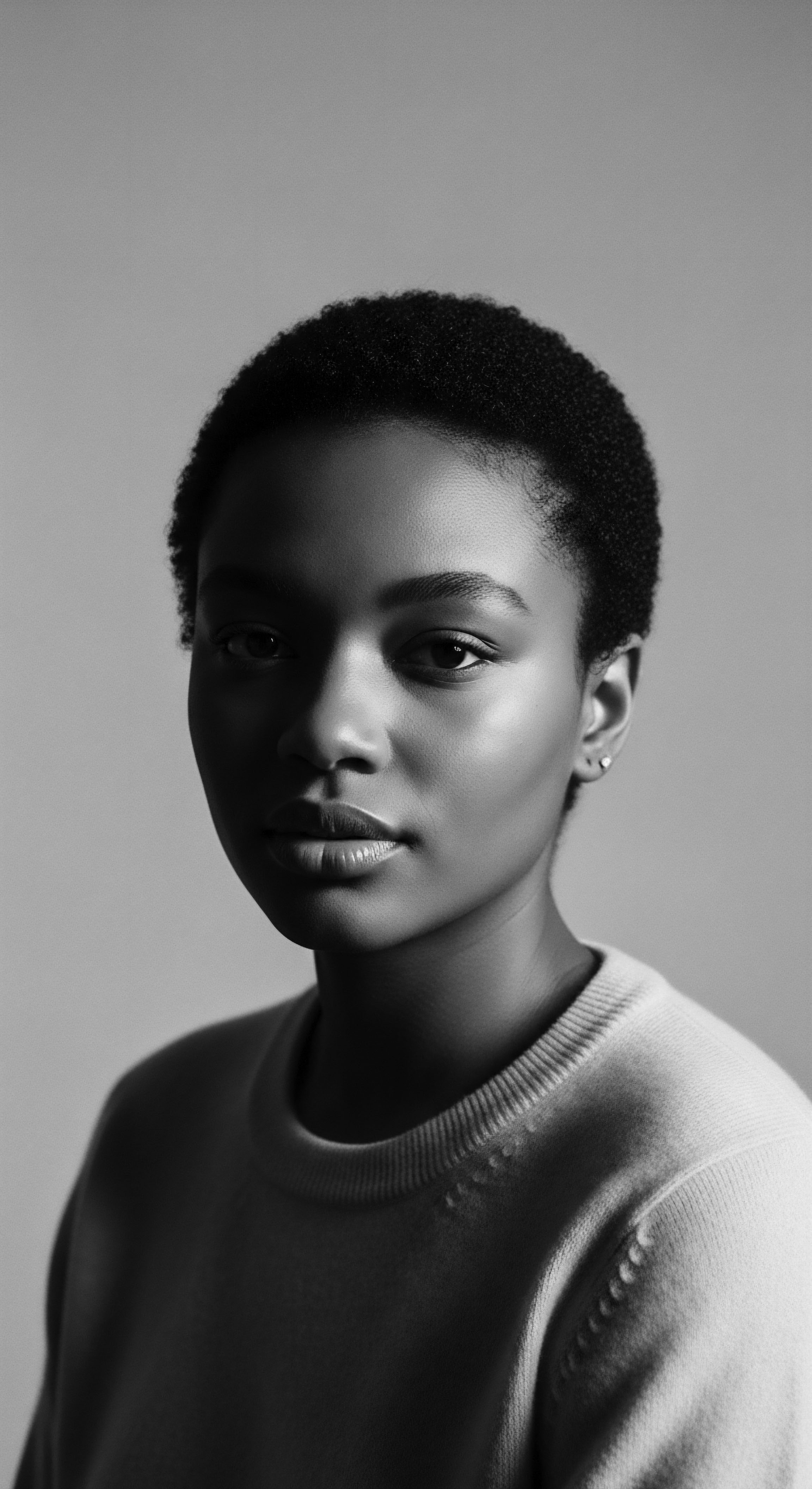
The Tender Thread ❉ Cultivation and Connection
The Halawa Hair Conceptual Meaning further extends to the deliberate and thoughtful cultivation of textured hair, viewing each act of care as a continuation of an ancient tradition. This involves understanding the specific needs of coily, curly, and wavy hair patterns and applying knowledge gleaned from both ancestral practices and contemporary trichology. The science of hair porosity, for example, explains why certain hair types benefit from specific emollients or sealing methods.
High porosity hair, with its open cuticle, requires heavier butters to lock in moisture, while low porosity hair, with a tightly closed cuticle, benefits from lighter oils and steam to aid absorption. These modern understandings often echo intuitive practices from generations past, where natural oils like shea butter (Vitellaria paradoxa) or black seed oil (Nigella sativa) were regularly applied, their efficacy validated by centuries of observed results.
The tender thread of care, therefore, becomes a conversation between ancient wisdom and modern scientific insight. The emphasis on gentle manipulation, finger-detangling, and protective styling—methods passed down through family lines—finds validation in scientific explanations of how these practices minimize mechanical damage to delicate hair strands. The historical use of natural ingredients like Aloe Vera (Aloe barbadensis miller) for soothing scalps or hibiscus (Hibiscus sabdariffa) for strengthening hair speaks to an intrinsic understanding of botanicals long before chemical compounds dominated the beauty industry. This continuous dialogue between past and present highlights the enduring relevance of ancestral hair care traditions to the Halawa Hair Conceptual Meaning, demonstrating that true hair wellness is deeply rooted in this historical continuum.
- Botanical Knowledge ❉ The inherited wisdom regarding which plants offer beneficial properties for cleansing, conditioning, and stimulating hair growth.
- Ritualistic Application ❉ The traditional practice of applying hair treatments often incorporated elements of intention, prayer, or communal bonding.
- Intergenerational Transfer ❉ The passing of hair care techniques and knowledge from elders to younger generations, ensuring continuity of heritage.
The ritualistic aspects of hair care, whether it is a mother braiding her child’s hair, or a gathering of women preparing for a special occasion, transcend mere functionality. These moments are imbued with shared stories, lessons about self-acceptance, and the subtle transfer of cultural heritage. They become living ceremonies, reinforcing the deep connection between hair, individual well-being, and collective identity. This nurturing, attentive approach forms a core part of the Halawa Hair Conceptual Meaning.
| Aspect of Care Moisture Sealing |
| Traditional Practice Applying shea butter or cocoa butter. |
| Modern Scientific Link Emollients with occlusive properties to prevent water loss from hair shaft. |
| Aspect of Care Gentle Detangling |
| Traditional Practice Finger-combing or using wide-tooth implements. |
| Modern Scientific Link Minimizes mechanical stress and reduces breakage on fragile strands. |
| Aspect of Care Scalp Health |
| Traditional Practice Massaging scalp with herbal oils, use of cleansing clays. |
| Modern Scientific Link Stimulates circulation, removes buildup, provides nutrients to hair follicles. |
| Aspect of Care Protective Styling |
| Traditional Practice Braids, twists, cornrows. |
| Modern Scientific Link Reduces daily manipulation, minimizes exposure to environmental damage. |
| Aspect of Care Ancestral wisdom in hair care often aligns with contemporary scientific principles, validating the enduring efficacy of traditional methods. |

The Unbound Helix ❉ Identity, Resistance, and Future
The Halawa Hair Conceptual Meaning culminates in understanding textured hair as an unbound helix—a dynamic symbol of identity, a powerful instrument of resistance, and a vibrant declaration of future possibilities. This perspective acknowledges the historical burdens placed upon Black and mixed-race hair, from the “Good Hair” versus “Bad Hair” dichotomy born of colonial and enslavement narratives to the persistent discrimination faced in professional and academic settings. Yet, the story of textured hair is not one of oppression alone; it is fundamentally a chronicle of unwavering agency and reclamation.
The “Natural Hair Movement” of the 20th and 21st centuries serves as a profound contemporary expression of the Halawa Hair Conceptual Meaning. This resurgence of pride in un-straightened, un-altered textured hair represents a collective act of self-definition and cultural affirmation. It is a powerful rejection of imposed beauty standards and an embracing of ancestral aesthetics. This movement, rooted in the legacy of the Civil Rights and Black Power movements, transcends mere style.
It represents a deeper psychological and social transformation, where individuals reclaim their inherent beauty and connection to their lineage. Studies, such as those that explore the experiences of Black women with natural hair, consistently show how the choice to wear natural styles is linked to increased self-esteem and a stronger sense of racial identity (Johnson and Bankhead, 2014).
Hair becomes an unbound helix, a powerful expression of identity and an unwavering testament to heritage, charting new paths for self-acceptance.
The Halawa Hair Conceptual Meaning, in this context, highlights hair as a site of constant negotiation and evolution. It prompts questions regarding the commodification of traditional hair care practices, the ethics of cultural appropriation, and the ongoing struggle for hair freedom in institutions. However, it also celebrates the boundless creativity within textured hair communities—the reinvention of ancestral styles, the development of new products grounded in traditional ingredients, and the proliferation of spaces where textured hair is celebrated and understood. The conversations surrounding hair in Black and mixed-race communities remain vibrant, reflecting a continuous process of self-discovery, collective remembrance, and a collective vision for a future where all hair types are honored.
The future implications of the Halawa Hair Conceptual Meaning point towards a deeper integration of scientific knowledge with ancestral reverence. It encourages the creation of hair care modalities that respect the unique biology of textured hair while honoring its cultural and spiritual significance. This involves advocating for policies that prevent hair discrimination, promoting education that celebrates diverse hair textures, and fostering environments where every individual feels empowered to wear their hair as an authentic expression of their heritage and self. The very fibers of textured hair, perpetually growing and changing, mirror the ongoing narrative of Black and mixed-race communities ❉ a story of resilience, adaptation, and profound, enduring beauty.
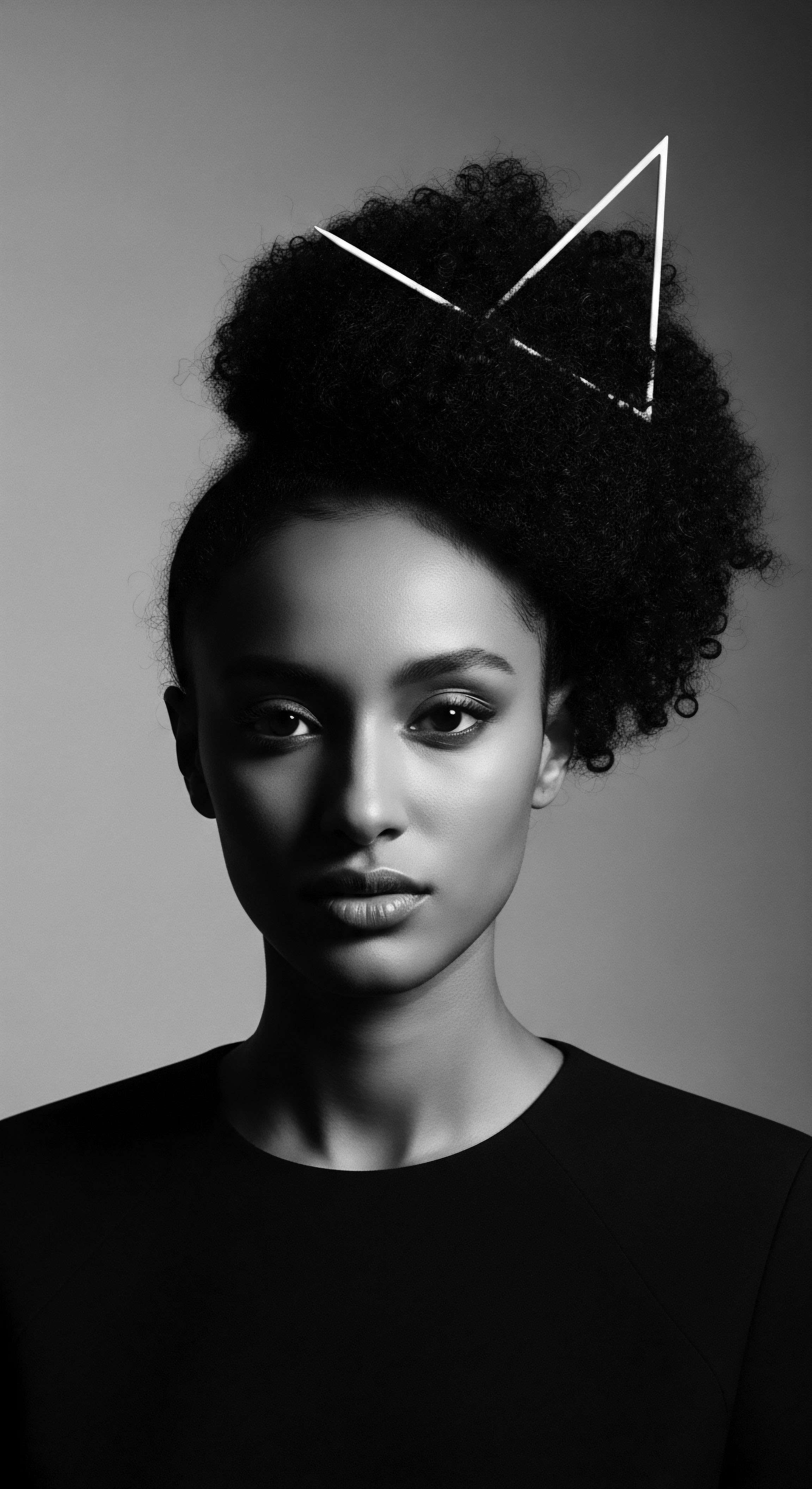
Reflection on the Heritage of Halawa Hair Conceptual Meaning
The journey through the Halawa Hair Conceptual Meaning is akin to tracing the tributaries of a vast, ancient river, each branch carrying stories from different landscapes and eras, all flowing into a profound understanding of textured hair. We begin at the very source, acknowledging the biological marvel of each strand, its unique architecture, and its inherent needs. This elemental understanding is a whispered secret from the earth, a recognition of hair’s natural inclinations.
From there, we wade into the living stream of ancestral practices, where care rituals were not chores but sacred ceremonies. Here, the meaning of Halawa Hair Conceptual Meaning deepens, revealing how hands that braided, oiled, and adorned were also hands that transmitted history, culture, and love. The communal nature of these acts, the stories shared over heads being coiffed, underscores hair’s role as a social unifier, a tangible link to forebears and a silent language among kin. These ancient echoes, resonating across time, remind us that the essence of hair care is connection.
As the river flows onward, it broadens into a vast expanse of identity and resilience. We witness how textured hair, through periods of adversity and triumph, became an unbound helix of self-expression. It stood as a silent protest against forced assimilation, a jubilant flag of pride, and a constant reaffirmation of belonging. The contemporary movements celebrating natural hair are but the latest powerful current in this river, carrying forward the Halawa Hair Conceptual Meaning ❉ a declaration that to care for one’s textured hair is to honor a lineage, to affirm a heritage, and to declare one’s place in the world with dignity.
The soul of a strand, then, is not simply its protein composition or its curl pattern. It is the wisdom of the elders who tended it, the resilience of those who wore it in defiance, and the enduring spirit of those who embrace its natural form today. The Halawa Hair Conceptual Meaning is a living testament to this enduring spirit, a continuous narrative of beauty, strength, and ancestral memory, ever-present in every magnificent coil and curl. It is a reminder that in every act of care, we connect with a legacy that is both deeply personal and universally resonant within the heritage of Black and mixed-race hair.

References
- Byrd, A. S. & Tharps, L. L. (2014). Hair Story ❉ Untangling the Roots of Black Hair in America. St. Martin’s Press.
- Johnson, T. A. & Bankhead, T. (2014). Hair It Is ❉ Examining the Experiences of Black Women with Natural Hair. Open Journal of Social Sciences, 2(1), 86-100.
- Omotos, A. (2018). The Significance of Hair in Ancient African Civilizations. Journal of Pan African Studies, 11(7), 171-182. (Referenced in Gale Review)
- Patton, T. O. (2006). Hey Girl, Am I More than My Hair? ❉ African American Women and Their Struggles with Beauty, Body Image, and Hair. Feminist Formations, 18(2), 24-51.
- Akanmori, H. (2015). Hair styling and the significance attached to this practice have played an important role in the African traditional culture. In The SAGE Encyclopedia of African Cultural Heritage in North America. SAGE Publications. (Referenced in ResearchGate PDF)
- Matjila, C. R. (2020). The meaning of hair for Southern African Black women. University of the Free State.
- White, S. & White, G. (1995). Slave Hair and African American Culture in the Eighteenth and Nineteenth Centuries. The Journal of Southern History, 61(1), 14-46.
- Olukoju, A. A. (2018). Orí (Head) as an Expression of Yorùbá Aesthetic Philosophy. International Journal of Current Research, 10(7), 71755-71761.
- Adepegba, S. (2022). Yorùbá Hair Art and the Agency of Women. In Decolonizing African Knowledge ❉ Autoethnography and African Epistemologies (pp. 373-413). Cambridge University Press.
- Eze, I. C. (2023). Black Hair as Transcript of Gendered Experience and an Artifact of Racial Resistance. (Forthcoming).
